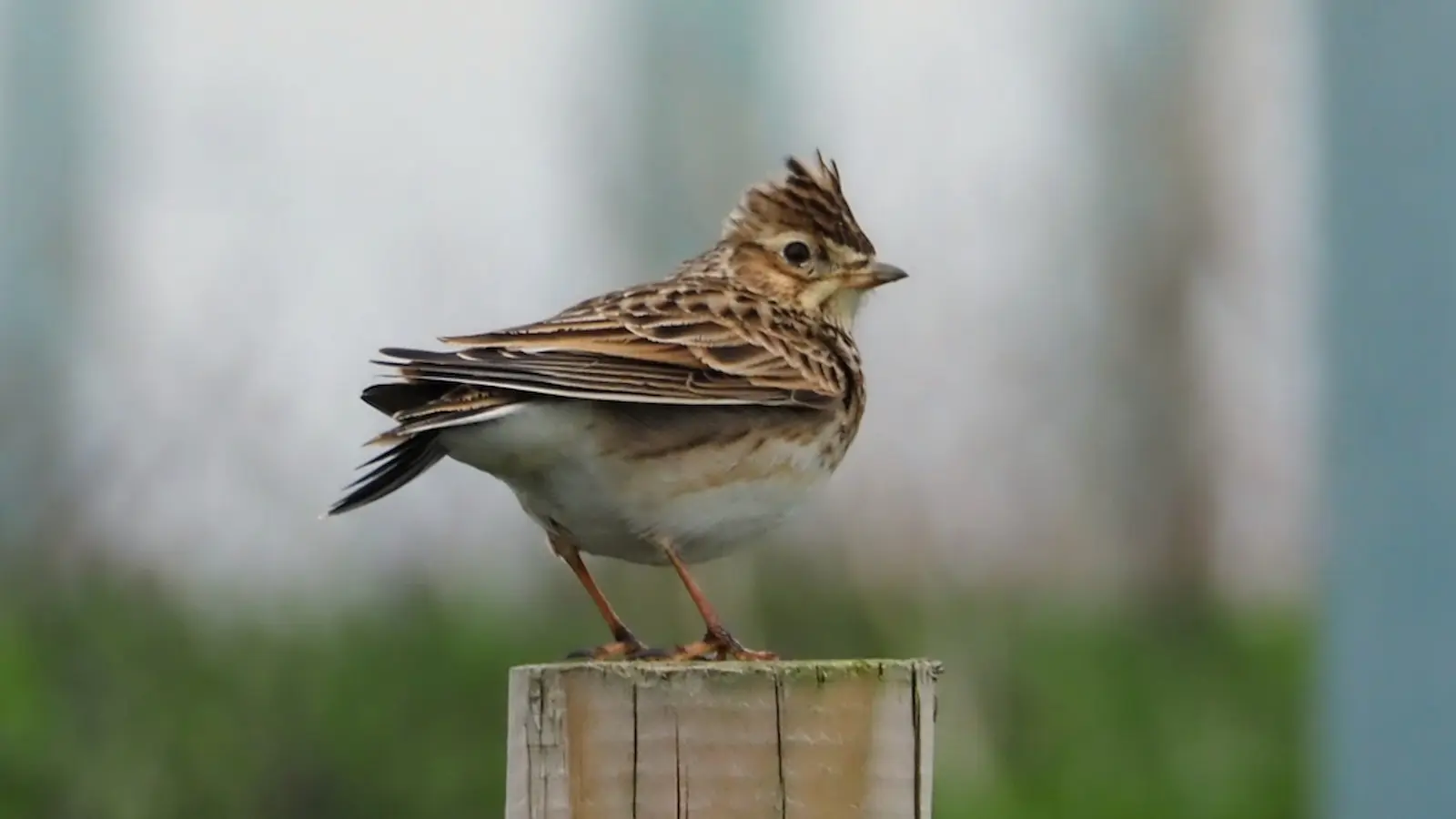If you see a skylark these days you are lucky. And if you hear a skylark, arguably, you are blessed.
The skylark is the only lark that is native to Ireland. It’s sometimes confused with its close relative, the much more common meadow pipit. Both are beautiful and often inconspicuous birds with brown and speckled plumage. And they both tend to have touches of white which are more visible when they are in flight. And they both engage in the world-beating behaviour known as song-flight, though each in a different manner. It’s fair to say that a skylark in ‘song flight’ is the superior bird, the real deal.
The skylark often has distinctive white stripe above the eye, referred to as a supercilium, which gives it an unusually alert appearance. For centuries skylarks eyes have been viewed as mysterious. In Shakespeare’s Romeo and Juliet, Juliet mentions the superstition that lark’s exchange their eyes with toads. She says it disparagingly, but only because the lark’s delightful morning song marks the end of Romeo’s secret visits. Shelley and Wordsworth, John Clare, Emily Dickinson, and the Irish poets Seamus Heaney and Michael Longley, all created lasting verse versions of the lark, which we can read for their ecological detail and for the wonder they communicate across the decades.
The meadow pipit’s name in Irish includes the word mhóna, which associates it not with meadows, as in its English name, but with bogs and uplands. There’s a related habitat clue in the Latin scientific name for the skylark, which is alauda arvensis. Arvensis means in the fields. Interestingly, the Latin term for meadow pipit includes the word pratensis, which can be translated as the voice in the meadow.
Almost all European countries have reported a decline in skylark numbers in recent decades, and in all cases the intensification of agriculture has been cited as the primary cause. These days, there are in the region of half a million pairs of skylarks on the island of Ireland.
In the An Tairseach archives, there is an intriguing reference to skylarks. An early experiment with the growing of organic barley led to their abundant presence in a stubble field in late summer 2001. Amid sightings of linnets, meadow pipits, curlews, yellowhammers and reed buntings, a licensed ringer counted forty-two skylarks on one particular visit in October 2001. This came as further affirmation to the Dominican sisters who founded the project that they were on the right track. The general conservation effort and various habitat experiments were undeniably bearing fruit. Sixty-four species of bird had already been recorded on the farm. Remarkably, two months later one hundred and fifty skylarks were counted.
It’s fair to say that the skylark is part of our farm’s heritage, its welcome appearance in the early days providing inspiration and impetus at a key time in the establishment of An Tairseach. We were delighted when the renowned radio documentary makers Anja Murray and Brían MacGloinn visited An Tairseach to record a skylark segment on our farm for their RTE Radio One series Feather and Flock. To find out more about their work, click here:
www.rte.ie/culture/2024/0514/1449110-feather-flock-anja-murray-on-her-lyrical-love-letter-to-birds/




